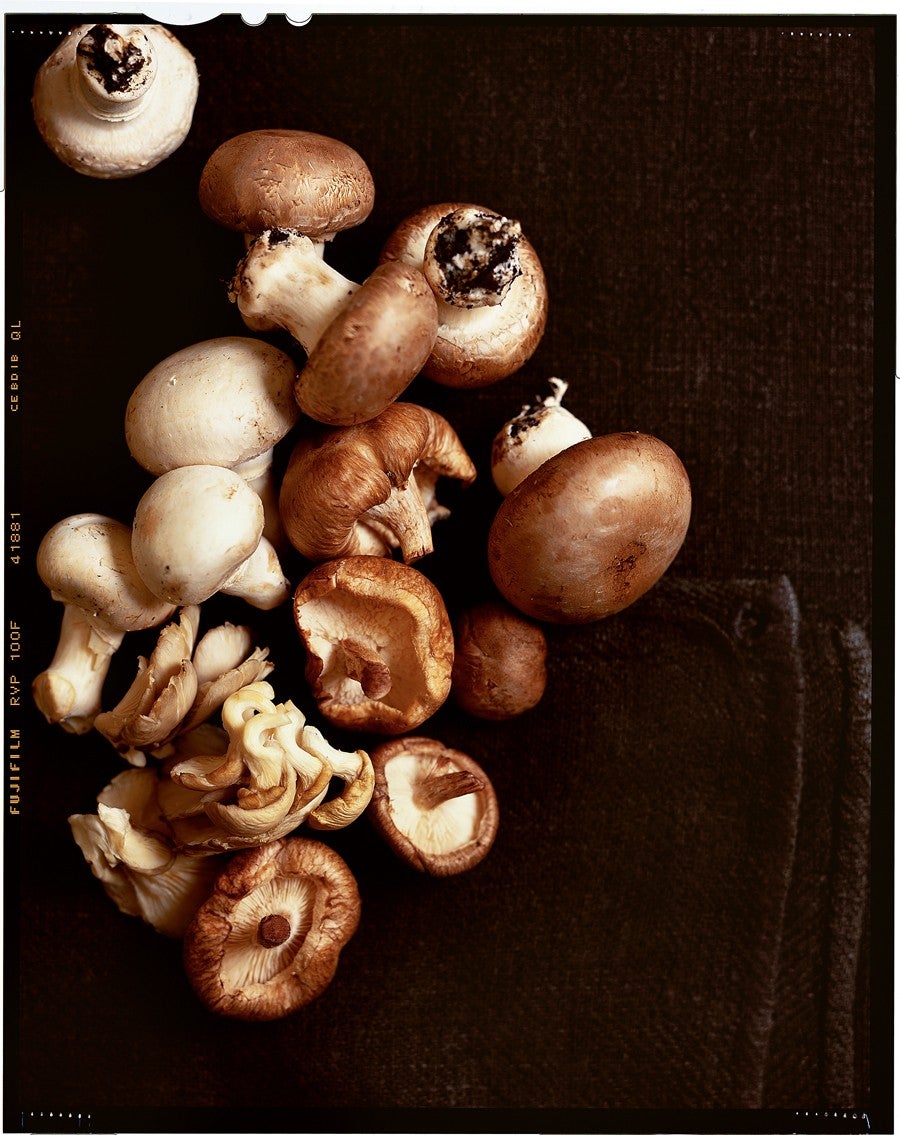A Cook’s Guide to Mushrooms

Mushrooms have it all. Flavor: that rich, earthy taste couldn’t come from any other vegetable. Texture: that hearty consistency complements everything from creamy soups to cookout fare. And nutrition: “Mushrooms deliver not only a truly savory taste, but also a uniquely healthy dietary supplement,” says David Fischer, author of Edible Wild Mushrooms of North America and founder of americanmushrooms.com. For as low as they are in calories (about 17 per serving), mushrooms are one of the few plant sources of vitamin D. Depending on the variety, a serving of mushrooms also offers about 300 milligrams of potassium, up to 30 percent of your daily need for selenium, and plenty of B vitamins.
Brown Bag It
Transfer just-bought fresh mushrooms from plastic bags or containers to brown paper bags to keep them fresh in the fridge for up to two weeks. The paper keeps light out but lets air in, so mushrooms stay firm and dry.
Go Wild
Wild mushrooms—black trumpets, porcini, morels, chanterelles, cloud ear, matsutake, lobster, and hedgehog, to name a few—come in a spectacular array of colors and shapes. While fresh wild mushrooms have fleeting seasons and can be expensive compared to cultivated varieties, their taste is unforgettable, which makes them worth seeking out. Use them in simple dishes that showcase their unique flavors and textures—earthy porcini in risotto, for example, or musky morels in a cream sauce atop pasta.
Stir-Fried Shiitake Mushrooms with Tofu and Bok Choy
Mushroom-Manchego Quesadillas (pictured)
Butternut Squash and Duxelles Casserole
Choices, choices
Most mushroom varieties are interchangeable in recipes, but this guide will help you bring out the best each type has to offer.
Button Mushroom
Description: Smooth, white, round-topped; account for 90 percent of mushrooms consumed in the United States.
Tasting Notes: Very mild—the longer they’re cooked, the more rich “mushroom” flavor they acquire.
Best for: Soups, stews, and veggie burger patties.
Cremini Mushroom
Description: Slightly larger than buttons, these have tan caps; sometimes labeled baby bellas.
Tasting notes: Firm and earthy, with a little more oomph than button mushrooms.
Best for: Use in place of button mushrooms for a heartier flavor.
Enoki Mushroom
Description: Thin, strand-like white mushrooms topped with small knobs; usually sold in bunches.
Tasting notes: Mild, almost fruity taste with a firm crunch.
Best for: Add to spring rolls, stir-fries, or other quick-cooking dishes.
King Oyster Mushroom
Description: Tall with a thick stem and beret-like cap. Available in Asian markets and gourmet groceries.
Tasting notes: Full-bodied, with a chewy texture.
Best for: Braised or broiled main dishes.
Oyster Mushroom
Description: Range from pale gray or blue to dark brownish-gray; fan-shaped with a long stem.
Tasting notes: Velvety soft with a delicate flavor that comes out when cooked.
Best for: Sauces, stir-fries, egg dishes, and stews.
Portobello Mushroom
Description: Grown-up cremini mushrooms; can be up to 6 inches in diameter.
Tasting notes: Brown, with dark-colored gills under caps. Hearty texture and robust flavor.
Best for: Marinating, then grilling, roasting, or broiling; also good for stuffing. Gills are sometimes removed.
Shiitake Mushroom
Description: Small, thin-stemmed, pale brown. Tough stems should be removed before cooking.
Tasting notes: Chewy, with a smoky flavor. Great for adding texture to main dishes or mixing with button mushrooms.
Best for: Stir-fries, soups, pasta dishes.